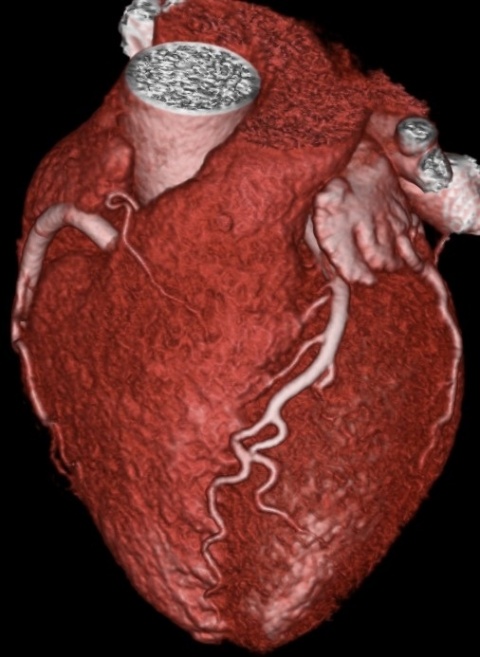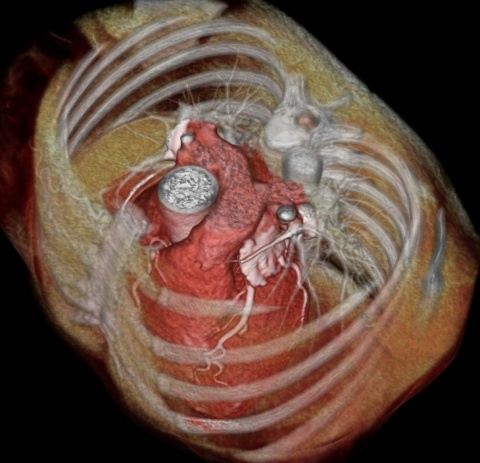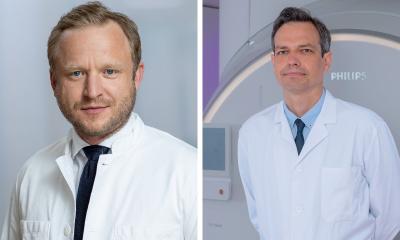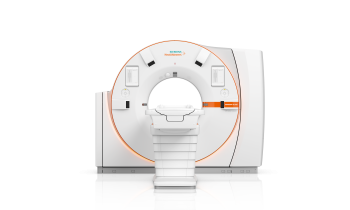Interview • CAD
Seeking CT’s role
Coronary artery disease (CAD) is the major killer worldwide. Its early detection can save the lives of many. Computed tomography (CT) has shown tremendous results in this area, but its advantage over more invasive techniques remains to be demonstrated, especially in patients with low to moderate risk.
Report: Mélisande Rouger

Across Europe, a large team of investigators decided to do just that through the new DISCHARGE study. Mélisande Rouger interviewed team member Marc Dewey, Professor of Radiology at the Charité University Hospital in Berlin, about the study’s aims and design.
‘DISCHARGE is a large multicentre randomised trial that aims to determine whether CTA helps to reduce myocardial infarction, stroke and cardiovascular death,’ explained Professor Marc Dewey, a team member in this pan-European study. ‘Procedural complications will be a secondary outcome. The study design was presented at the last ECR, during a late-breaking clinical trial session. The study has only just begun and is being conducted in 30 sites across Europe so far. We also plan to include large and small hospitals in the project.
Ultimately, DISCHARGE aims to provide the basis for new guidelines in cardiac imaging. Therefore, we are collaborating closely with clinical sites as well as non-clinical partners to optimise the impact of the study for the benefit of the different European health systems. This study has been granted six million euros through the 7th Framework Programme of the European Union (EC-GA 603266). It will actively recruit for two years with a maximum follow-up of four years.’
Today, where is CT placed in assessing suspected CAD?

‘Currently, CT has little role and is not reimbursed for this purpose. Despite its proven high diagnostic accuracy, CT’s full diagnostic potential is not being used, mainly because the comparative effectiveness of CT versus invasive coronary angiography (ICA) has not been shown in patients with stable chest pain and suspected CAD.
‘In most European countries, ICA is the final reference standard to detect CAD, but it only allows minimally invasive treatment of coronary stenosis during the same procedure. However, approximately two million ICAs, done in Europe every year, do not detect CAD. It is thus the focus of our research efforts to analyse in which cases CT could replace these invasive tests.’
Does CT have diagnostic value in stable chest pain and suspected CAD?

‘ICA is an invasive technique. As a diagnostic tool for patients with suspected CAD, especially with a low to moderate risk (10-60%), alternative tests that are non-invasive might provide a better risk/benefit ratio in favour of the patient. CT, because it is non-invasive, also grants potentially higher patient safety if used in appropriate clinical situations – but currently we do not know which ones.
‘Early detection and improved characterisation of coronary plaques in the entire coronary artery tree is possible with CT. Certain unique high-risk plaque features have been shown to predict subsequent events and outcomes if assessed by CT. However, it’s not known from a randomised trial whether such high-risk plaques should lead us to recommend intensified risk factor modification or certain medications.
‘Another advantage is that CT images the tissues surrounding the heart, whilst ICA is limited to the coronary arteries. Therefore, CT has the possibility to check the lungs, oesophagus and spine, which may result in a diagnosis that explains chest pain and suggests appropriate treatment, but could be overlooked by ICA. In conclusion, ICA is the best way to treat known CAD; but in a situation where ruling out diagnosis of CAD is likely, CT, with its tremendously improved image quality, might prove to be the best method available.’
Other imaging modalities to rule out CAD
‘We also use imaging ischemia tests, such as stress MRI, PET/CT, SPECT and stress echocardiography. These tests, while they allow the detection of CAD, are so-called functional tests and thus have a different purpose than CT. These perfusion-imaging tests enable a search for stress-induced ischemic myocardial areas, which play an important role in clinical decision-making in case of anatomic coronary stenosis found by CT with unclear functional relevance.’
Future promising techniques
‘For all the above-mentioned non-invasive techniques (CT, MRI, PET/CT, SPECT, and echocardiography), dedicated research groups are working in Europe to further improve these diagnostic tests from a technical and clinical perspective. The main goal would be to develop a comprehensive imaging test that would allow accurate stenosis detection, characterisation of coronary plaques and myocardial perfusion assessment.'
Profile:
Marc Dewey MD is the Heisenberg Professor of Radiology and Vice Chair of the Department of Radiology at Charité University Hospital, Berlin, Germany. He studied medicine at Charité and Johns Hopkins universities. His research focused on non-invasive cardiovascular imaging, cardiac MRI and CT, radiation dose, experimental radiology, meta-analyses, cost-effectiveness and patient-centred imaging. Publications number over 150 and he has produced 65 original papers as first or last author, and given more than 70 invited lectures, including at the RSNA and ECR.
31.08.2015











